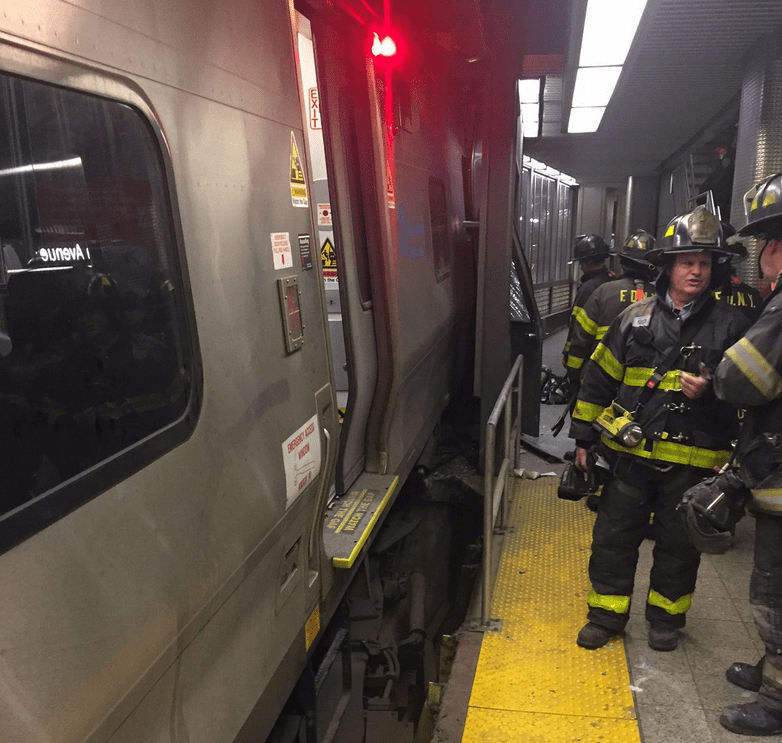A Long Island Rail Road train that failed to come to a complete stop entering Atlantic Terminal in Brooklyn Wednesday morning partly derailed, leaving more a 100 people with injuries, many of them minor.
In total, 103 people were hurt when the train, which originated from Far Rockaway, came to a sudden halt. The most serious injury resulted in a possible broken leg, officials said. There were no fatalities.
The sudden crash occurred at approximately 8:15 a.m., when many riders were preparing to exit the train, officials said.
As the six-car train carrying 430 passengers entered Atlantic Terminal it failed to come to a complete stop, causing the train to strike and hop over the track’s bumping block. As a result, the lead car and an axel derailed, said MTA Chairman Tom Prendergast.
As officials surveyed the crash site there was little in terms of clues as to why the train failed to stop earlier.
The cause of the crash is under investigation. The MTA has been in contact with the Federal Railroad Administration and the National Transportation Safety Board.
“Obviously the train is supposed to stop short of the bumping block. It did not do that,” Prendergast told reporters. “So that’s one of the things we’ll look at. It’s one of the factors that we will look at in the investigation.”
While a train’s speed at the time of a crash or derailment often serves as the basis for much speculation, it did not appear that excessive speed played a role in this crash.
Prendergast said he was unsure how fast the train was traveling but noted that standard procedure is around 10-15 miles per hour for trains entering a terminal. And Gov. Andrew Cuomo, who was also at the scene, said the train was moving at “a fairly low rate of speed.”
As part of the probe, the train’s locomotive engineer, the conductor and the brakeman will all be interviewed.
“We don’t know and obviously there will be an investigation to find out exactly what happened and why the operator didn’t stop the train before it hit the bumping block,” Cuomo said.
The governor also played down the notion of a derailment.
“Derailment is actually somewhat of a misnomer here. It’s not that it derailed,” Cuomo said. “The train hit the bumping block and when it hit the bumping block, the bumping block basically knocked it off the tracks, so it wasn’t a derailment. It was a train that didn’t stop when it was supposed to, hit the bumping block at a fairly low rate of speed.”
Most of the injuries were caused by the train’s sudden stop, which they were not prepared for, Cuomo said. He added that it was difficult to ascertain how many people were hurt because a number of riders simply left the scene following the crash.
Originally, the FDNY reported three-dozen injuries. That number then spiked to more than 70 before the fire department reported a total of 103 injuries.
Wednesday’s incident comes nearly three months after an LIRR passenger train collided with a work train in New Hyde Park, injuring 29.
As far as major train crashes go, Wednesday’s incident did not compare to some of the more serious recent derailments, officials said.
“There are accidents that happen, right?” Cuomo said. “This is a very large system, you are operating literally hundreds and hundreds of trains every morning with thousands and thousands of people…We have been through a number of them over the past few years. Many of them frankly, we were not this lucky. This is a relatively minor accident, luckily.”
(Featured photo credit: FDNY/Twitter)



































